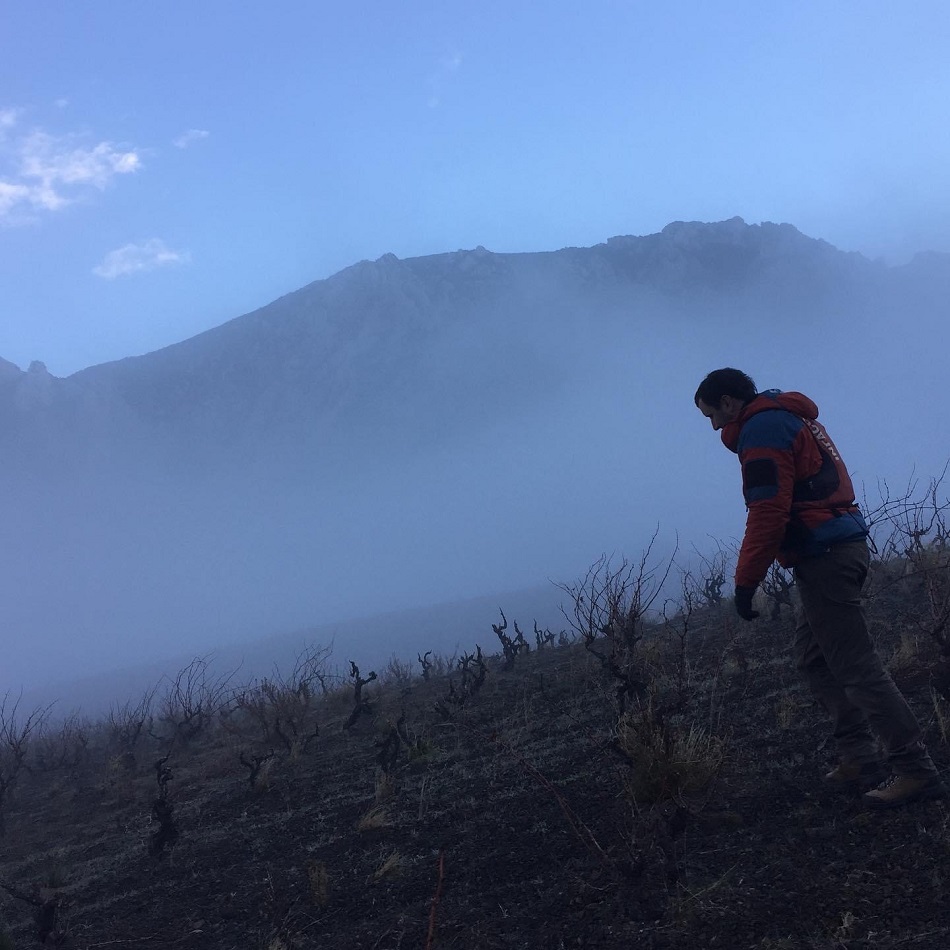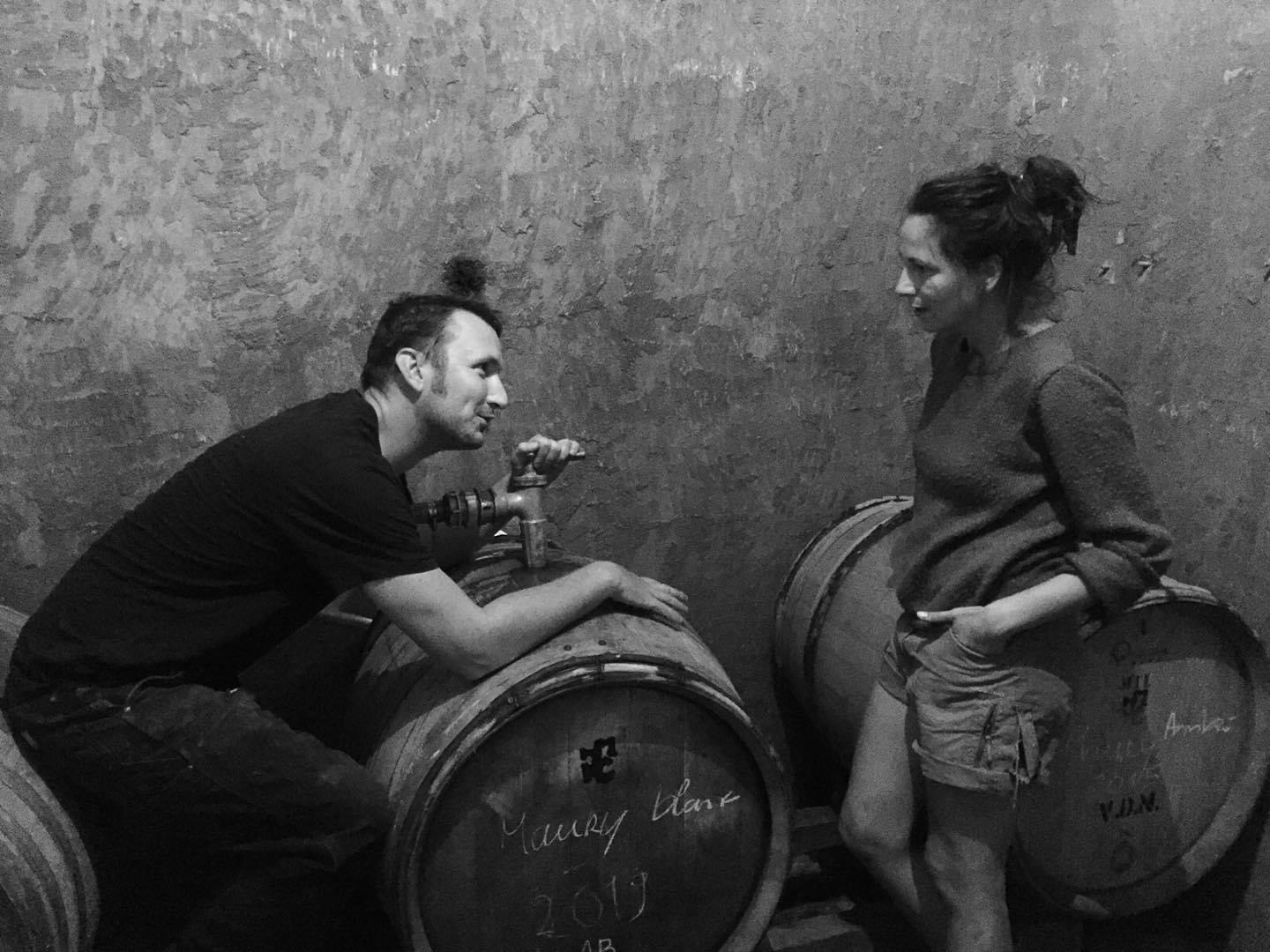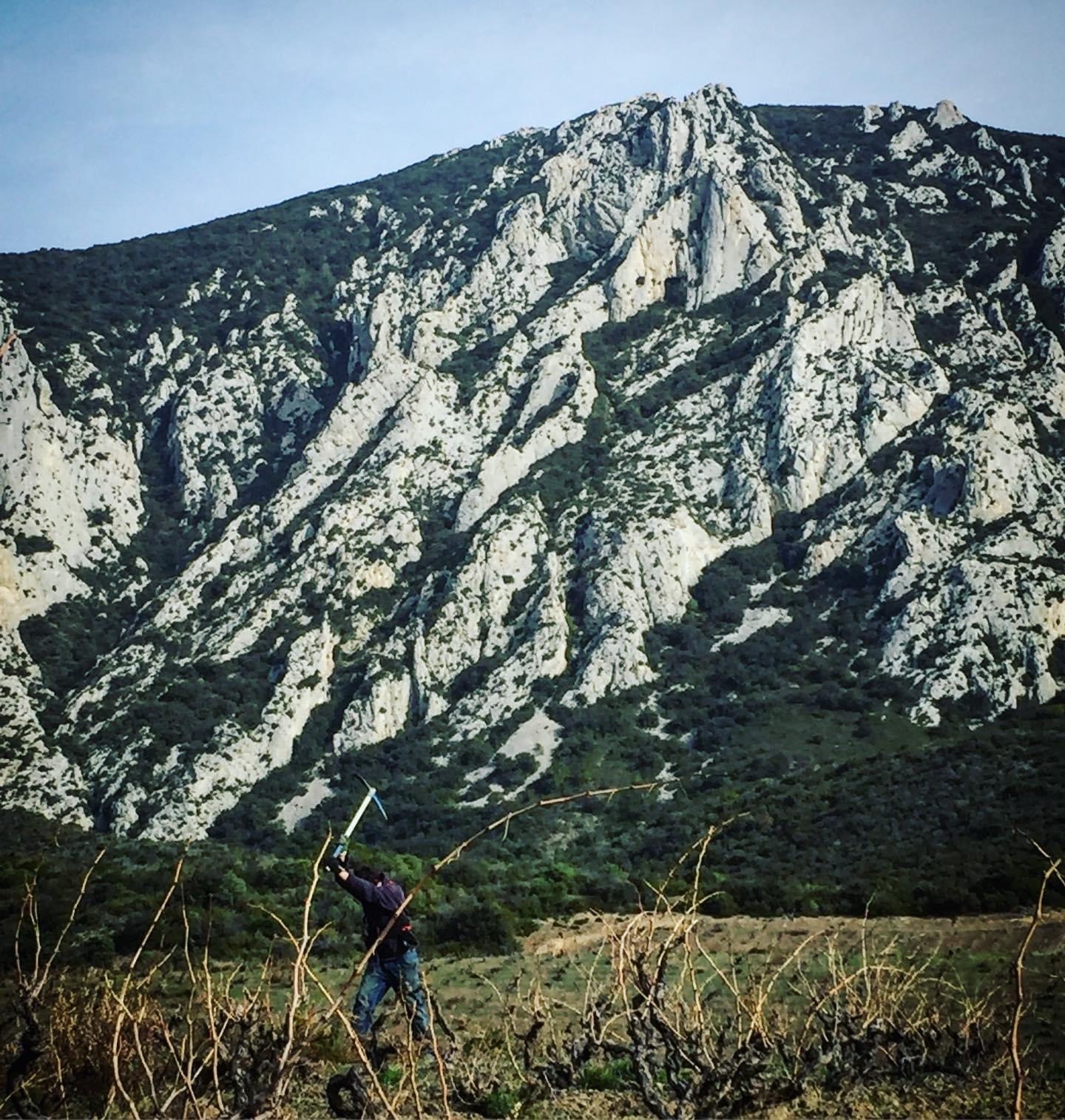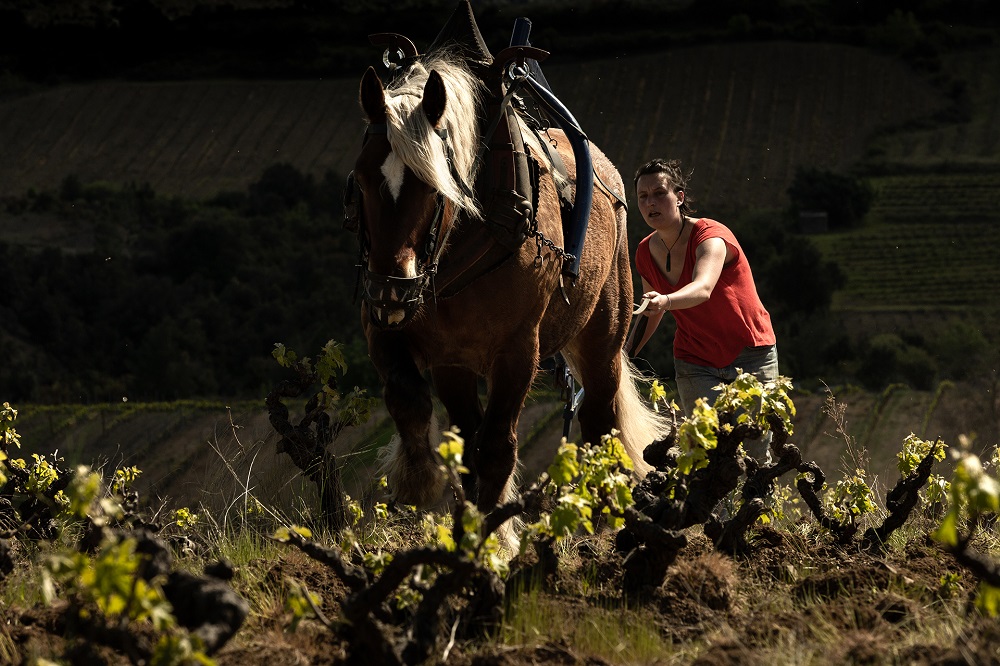Domaine Paul Meunier

| Country & Region | France, Roussillon |
| Appellation(s) | Côtes du Roussillon, Côtes du Roussillon Villages |
| Producer | Paul and Lucile Meunier |
| Founded | 2013 |
| Website | www.paulmeunier-centernach.com/english/ |
Andrew Jefford has called [Roussillon] the ‘northern Catalan echo of Priorat’, and as the place where he’d ‘set about hunting for absolute grandeur’. I’d go further. Priorat wines taste of power and grandeur and the hot, arid place where they come from. Roussillon wines, I am increasingly discovering, have this almost perturbing grace. The best of them, from the oldest vines in harsh mountain vineyards, are strikingly introvert, perfumed, bafflingly fine-boned. —Tamlyn Currin, JancisRobinson.com, July 2021
Paul Meunier grew up at Burgundy’s J.J. Confuron, a domaine still managed by his parents. Following his studies, he traveled in South America for a year, and upon his return got a degree in viticulture and winemaking. For an internship, he chose Roussillon, specifically Domaine de la Preceptorie, because he had a keen interest in the sub-region of Maury and its sweet wines. For several years thereafter, he split his time between Lebanon as a contract winemaker and a winemaker’s assistant at a winery down under in Australia. In between those seasons, he helped with teaching and translation at a winemaking school in Chile or worked as a sommelier in Japan. After five years, he landed in the Roussillon village of Centernach, in the upper Agly Valley, where he bought some choice vineyard parcels from growers who had always sold their crop to the local co-op and were retiring.

This was in 2013-14. His better half Lucile Morin had no background in wine—she was an actress—but she joined Paul in 2014 and in no time found herself helping in the vines and in revamping the old cellar they acquired (pressed to find a place to vinify the 2014 harvest, they ended up buying Centernach’s old co-op cellar as well). There was simply so much to do. Like Paul, she became deeply committed, and took courses and internships to increase her training to the point where today, they are equals in a task that has gone beyond just making wine. They’ve embarked on agroforestry, planting trees and hedges to give diversity and protection to their soils and vines.

Roussillon has long had a harsh climate, one that is only growing more extreme with climatic chaos. The threat is twofold. First, aridness: rainfall typically only happens in winter, and desertification is an issue. Second, wind: the Tramontane, which sweeps off the Pyrenees, a cold air sucked across the Med by the Sahara (it’s the same principle at work with the Rhone’s mistral coming off the Alps) with such force that grape ripening is both slowed and concentrated by the drying wind. The introduction of windbreaks can reduce the force of the wind and help against erosion (the winter rainfall is becoming more violent), while trees and shrubs help rebuild the structure of the soil, thus retaining water.

Paul and Lucile farm 25 acres, a little over 17 of which is in red varieties, the rest in white. This acreage is broken down into parcels scattered across the communes of Centernach, Lesquerde, Maury and Saint-Paul-de-Fenouillet. Elevations are diverse (425 to 1,150 feet), as are exposition and soils—from black schist to granite sands to the more typical French clay limestone mix. Some of their plots are strewn with old river stones, the galet roulets of Châteauneuf. From the start, they’ve worked organically, and their oldest parcels (about half of their total) are lightly plowed by a horse—Paul’s sister does this; it’s her horse, and she’s there for roughly three months of every year for the work. (Thanks to Antonin Bonnet for the photo of Perrine plowing). The average vine age across the 25 acres is 60+ years.

They harvest on the early side, looking always for freshness and elegance in their wines. Extraction, such as it is, is extremely light—there’s practically no need. Fermentations take place in concrete, amphora, and steel, depending on the variety and the plot. Sulfur additions are minimal. Each plot is fermented and aged separately, and blends take place only before bottling. They then age their wine in bottle further, with the aim to put wine on the market that is ready to drink.
Early in 2022, Lucile read Tamlyn Currin’s article (quoted at top, here in full), and said, Thank you for this article, it made me laugh with pleasure and surprise; essentially, it explains why we set up shop here and the happiness we have in bringing these wines into the world.
All of their wines, regardless of color, benefit from decanting and aeration. Despite the low levels of SO2, they have exceptional ability to withstand oxidation.

By planting a fruit tree that sometimes promises to last several centuries, a farmer works on a scale that far exceeds that of a human life. The woman who plants an olive tree, a pistachio tree, a vine, in good growing conditions, this woman improves the world in which others will live. That’s all. It’s not much, and at the same time it’s everything. – Lucile Morin
The Wines
| Wine | Blend | Description |
|---|---|---|
| Côtes du Roussillon Cuvée Quartier Libre | Grenache 50%, Carignan 20%, Syrah 20%, Lledoner Pelut 10% | This comes from seven parcels across all four of the communes where they farm vines. Some of the Carignan and Grenache is fermented in amphora, and élevage takes place in neutral barrels. Production averages 325 cases. |
| Côtes du Roussillon Villages Les Chorèmes rouge | Carignan 60%, Grenache 20%, Syrah 15%, Lledoner Pelut 5% | From four parcels of especially old vines in Lesquerde, Maury and Saint-Paul-de-Fenouillet. The word Chorèmes comes from the Greek root for space and chorus and is a spatial cognition term referring to routes between spaces—in this case, pathways (physical and metaphysical) between plots of vines and between vines themselves. Raised in older barrel with an average production of 165 cases. |
| Côtes du Roussillon Les Chorèmes blanc | Macabeu 80% and Grenache Gris 20% | From a single parcel of vines planted as a field blend in 1950, this grows on a high, north-facing slope of black schist soil in Saint-Paul-de-Fenouillet. The grapes are harvested together, fermentations take place in amphora and steel, and the wine is raised on its fine lees in steel. Production of this rare and remarkable wine averages 165 cases. |